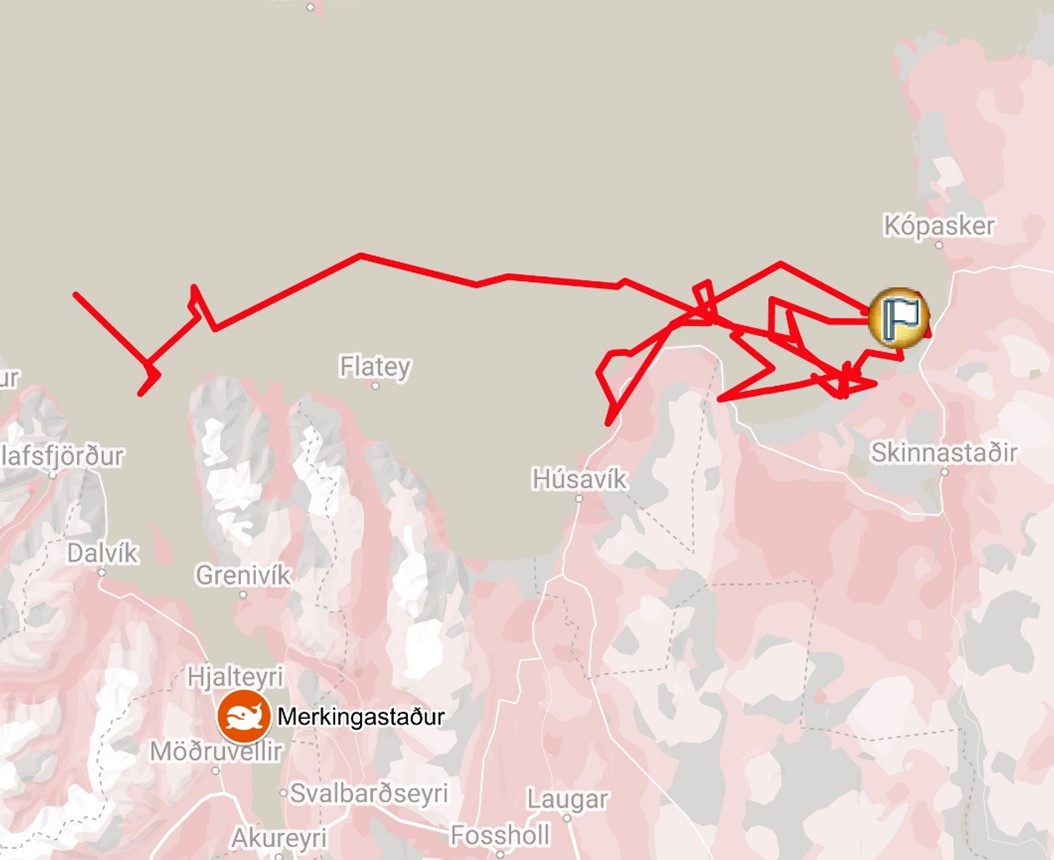- Research
- Fish tagging
- Lumpfish research
- Oceanography
- Seabed mapping
- Arnarfjörður
- Drekasvæði
- Ísafjarðardjúp
- Jökulbanki
- Jökuldjúp
- Kolbeinseyjarhryggur and adjacent area
- Kolluáll
- Langanesgrunn
- Látragrunn
- Nesdjúp
- Reykjaneshryggur and adjacent area
- Selvogsbanki
- South of Selvogsbanki
- South of Skeiðarárdjúp
- South of Skerjadjúp
- Southeast of Lónsdjúp
- Southwest of Jökuldjúp
- Suðausturmið
- Suðurdjúp
- Vesturdjúp
- East of Reykjaneshryggur
- Vestfjardarmid
- Seal research
- Whale Research
- Advice
- About
Whale tagging with new satellite tags
26. September 2024
The Marine and Freshwater Research Institute (MFRI) has in recent weeks made attempts to tag minke whales in Eyjafjörður in N-Iceland. The tagging is a part of project called MinTag and is under the North Atlantic Marine Mammal Commission, NAMMCO.
MFRI has been involved in the project since it began in 2021. The goal of the project is to develop smaller satellite tags suitable for tagging fast-swimming cetacean species such as minke, fin and pilot whales; species that have been especially difficult to tag. The project is therefore important to improve methods for acquiring knowledge about the migration and behaviour of these species. The tags are designed in collaboration with the engineering company Wildlife Computers in the United States, which has been a leader in the field of designing tags for use in wildlife research. Participating nations include Iceland, Norway, Greenland, the Faroe Islands and Japan, but experts at MFRI are responsible for the tagging in Icelandic waters.
You can read more about the project and the development work on the NAMMCO website, here, and you can also follow all whales tagged with the new tags on a dedicated web page, here.
MFRI has been making attempts to tag the whales in Eyjafjörður, N-Iceland. For this purpose, a small fishing vessel Tryggvi Sveins EA-49 was rented, a vessel that is especially suitable and equipped for such tagging and has often been used for such purpose in the past. Skipper and gunner Tryggvi Sveinsson, has decades of experience in tagging whales. MFRI´s employees who participate in the MinTag project are Dr. Sandra Granquist (project manager on behalf of Iceland), Sverrir Daníel Halldórsson (expedition manager and participant in development work), Eric Ruben dos Santos and Bronte Mae Harris.
Minke whales are especially difficult to approach. Specialised skills must be used to get close enough to them to ensure successful tagging. They most often swim criss-cross, so it is difficult to evaluate where they will surface next to breathe. It, therefore, requires a lot of patience to tag them.
During this autumn there has been some minke whales inside Eyjafjörður and one of them was tagged south of Hjalteyri on 14th September. The map below shows the trajectory of the tagged whale from the first transmitted location on 15th until the noon of the 23rd. After the animal swam north out of Eyjafjörður, it set a steady course eastward, and two days later it reached the easternmost part of Axarfjördur bay where it has remained for the most of the time since.
The map below shows the whale's journey and location at noon on 23 September.


